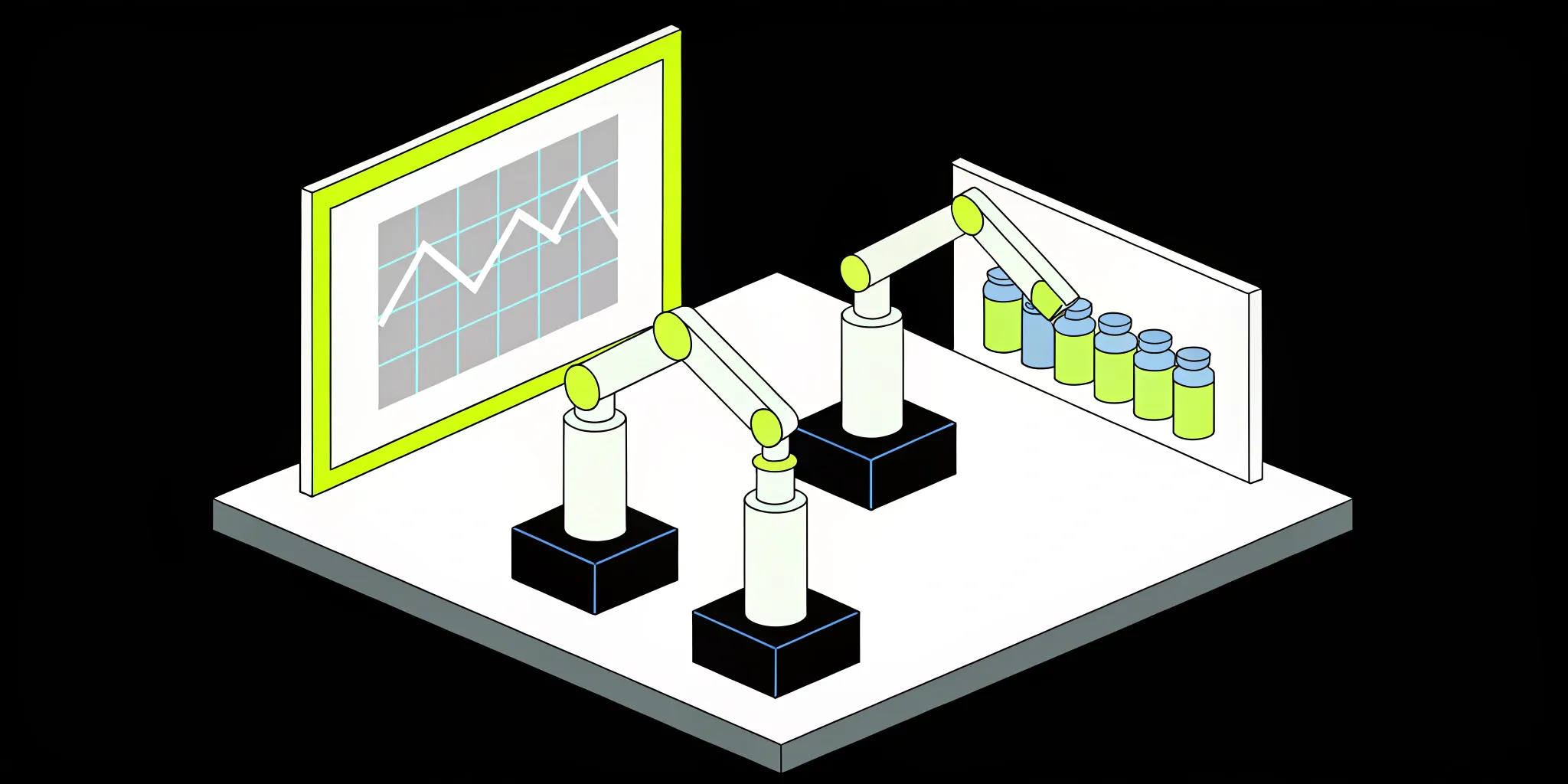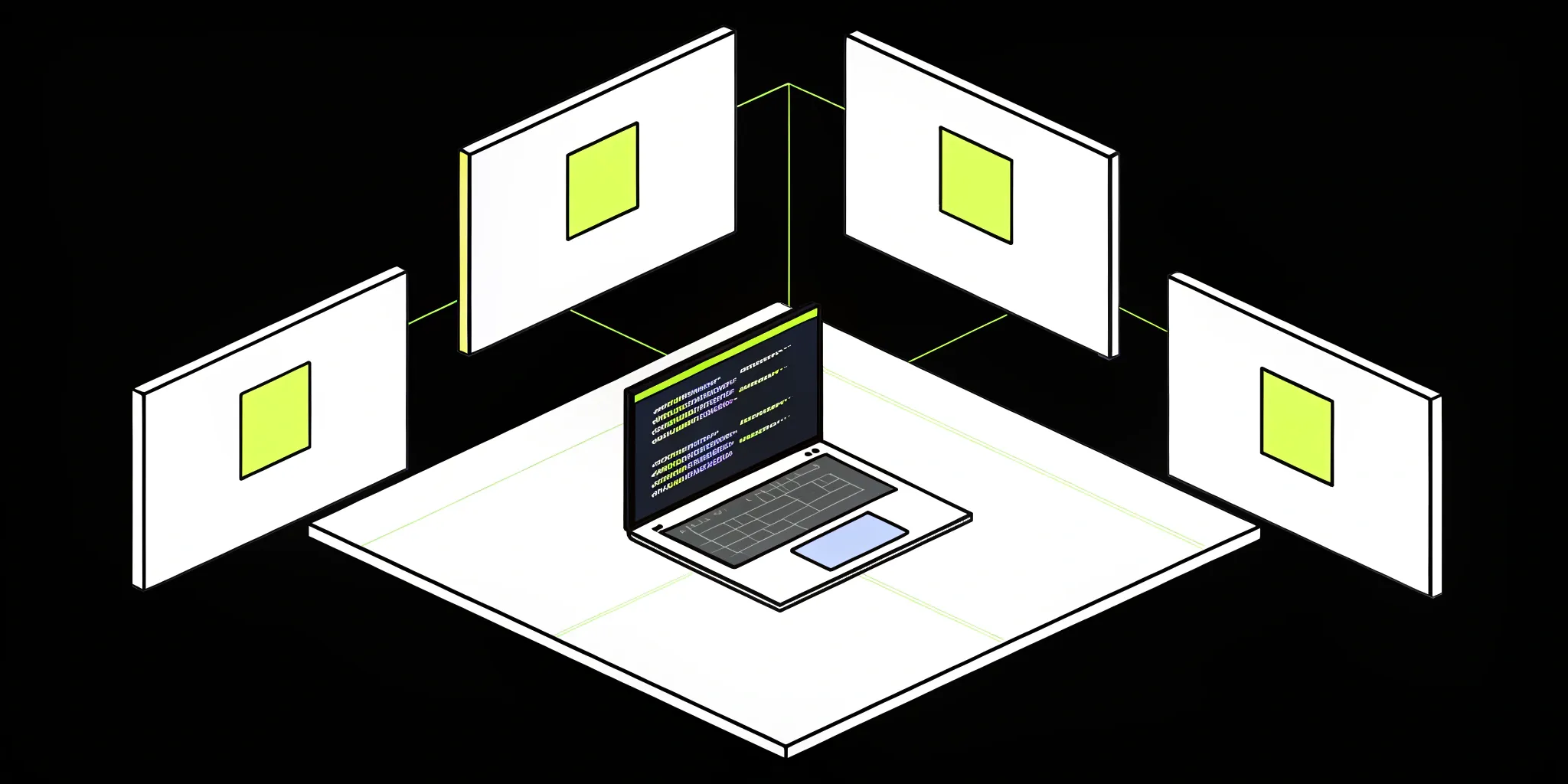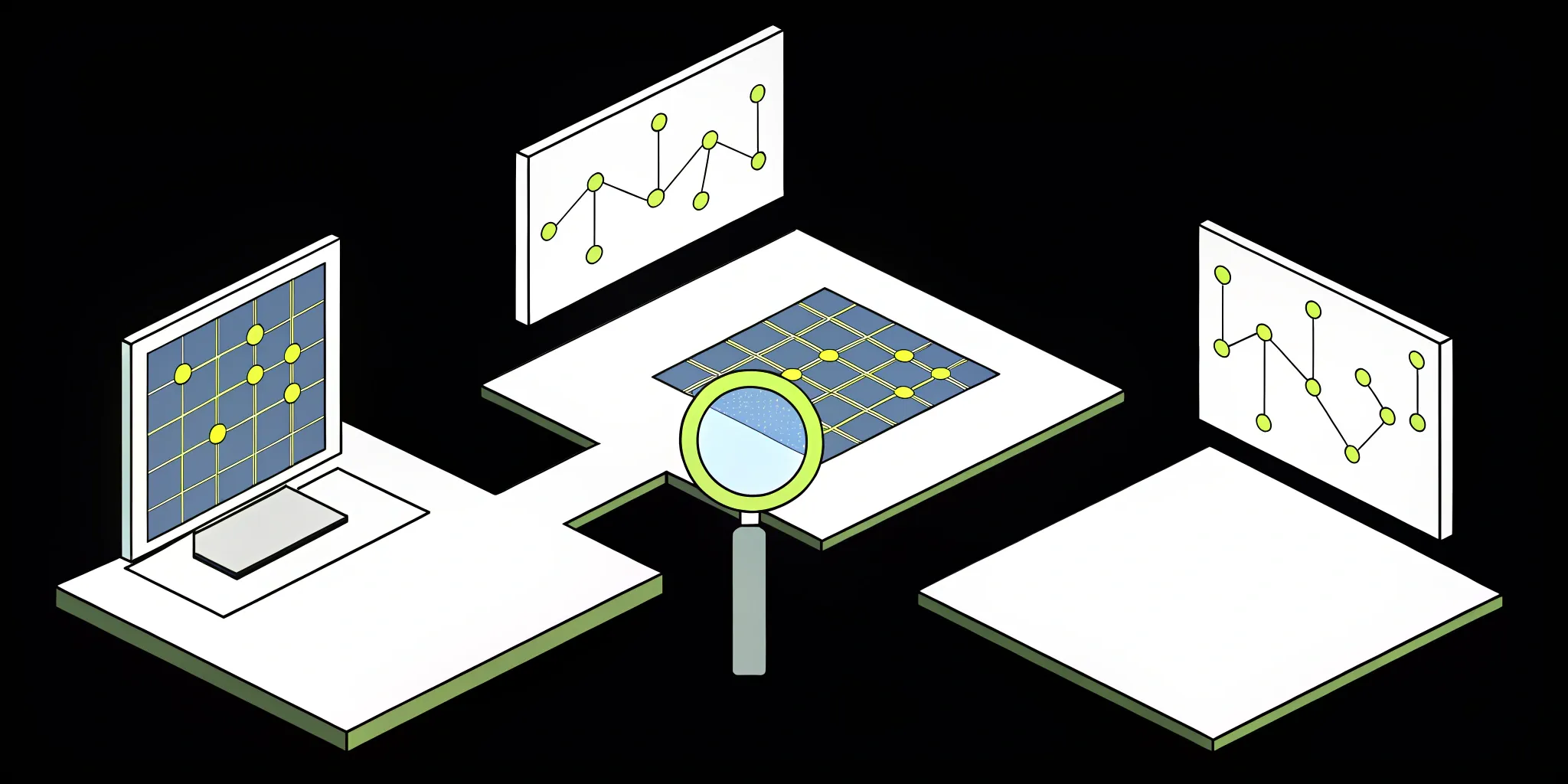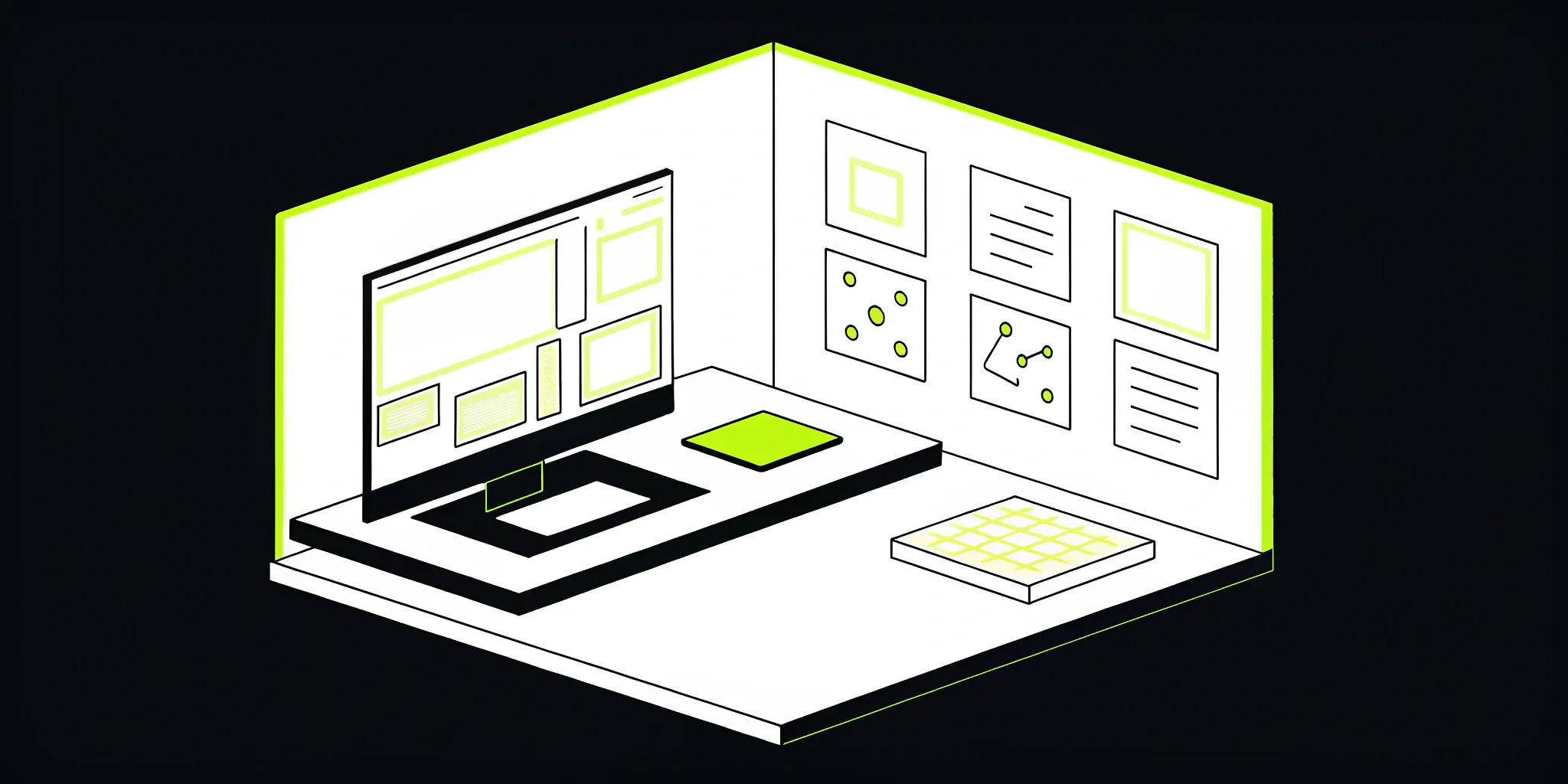Top 5 Open-Source Components for Healthcare AI

The spirit of open-source software is built on collaboration and shared progress, which aligns perfectly with the mission of advancing healthcare. Instead of starting from scratch, your team can leverage the collective expertise of a global community of developers and researchers. This approach not only accelerates development but also fosters transparency, which is essential for building trust with clinicians and patients. The first step in this journey is choosing the right building blocks. To help you get started, we’ve compiled a list of the Top Open-Source Tools for Building Healthcare AI Solutions. These platforms provide the foundational technology you need to create reliable, innovative, and effective applications.
Key takeaways
- Open-source is more than free software; it's a collaborative effort: The true power of these tools comes from the global community that builds, vets, and supports them. This shared work leads to more affordable, transparent, and reliable solutions you can trust.
- Prioritize tools that speak the language of healthcare: Generic AI won't work. Your chosen tool must be designed to handle complex medical data, like clinical notes and imaging files, while helping you meet strict compliance and security standards like HIPAA.
- A great tool is only the first step: Successful implementation requires a plan that goes beyond the software itself. You need to consider how you'll integrate it with existing systems, manage long-term security, and get your clinical team on board.
How open-source AI is transforming healthcare
Open-source AI is fundamentally changing how we approach healthcare, making advanced technology more accessible and fostering a spirit of shared progress. The collaborative nature of open-source means that developers and researchers from around the world can contribute to a single project. This community effort leads to rapid improvements and more affordable solutions, breaking down barriers that have historically limited access to cutting-edge tools. For healthcare organizations, this means you can adopt and implement AI technologies without the hefty price tag of proprietary software.
On a practical level, these AI tools are changing healthcare by introducing incredible efficiencies and enhancing patient care. AI models can analyze complex medical images, interpret patient data to identify at-risk individuals, and even accelerate the drug discovery process. By automating these intensive tasks, you free up clinicians and researchers to focus on what they do best: providing care and pushing the boundaries of medicine. It’s about working smarter, not harder, to achieve better outcomes.
This transformation is powered by comprehensive frameworks designed specifically for medical AI. For example, the Medical Open Network for AI (MONAI) provides a complete, open-source toolkit that supports the entire development pipeline, from annotating data to deploying models in a clinical setting. Having a standardized, end-to-end platform makes it much easier for your team to build and validate sophisticated applications.
Ultimately, the goal is to build dependable tools that clinicians can trust. The best open-source projects are proven, vetted by a global community of developers, and ready for real-world use. By leveraging these resources, you can create reliable clinical applications that streamline processes and directly contribute to improving patient health. It’s a powerful way to drive meaningful innovation in a field that impacts us all.
Why choose open-source tools for healthcare AI?
When you're building something as important as a healthcare application, the tools you choose are foundational. While proprietary software has its place, the open-source community offers a powerful alternative rooted in collaboration and transparency. At its core, open-source AI means the code is free for anyone to use, change, and share. This isn't just about saving money; it's about joining a global effort to solve complex problems. Instead of a single company working in a silo, you have thousands of developers, researchers, and clinicians contributing to a shared resource.
This collaborative spirit is what makes open-source tools so dynamic. The constant feedback loop leads to rapid innovation and more affordable, effective solutions. Because the model is built on community contributions, these tools are incredibly flexible and encourage many people and organizations to contribute. This prevents vendor lock-in and gives your team the freedom to adapt the technology to your specific needs. It also makes advanced AI more accessible, helping to close knowledge gaps and foster teamwork between the people building the tech and the experts who will use it.
Ultimately, using the right tools is essential for building reliable solutions that clinicians and patients can trust. The best open-source projects are vetted by a global community, making them robust and ready for real-world clinical applications. When you select a well-supported open-source tool, you’re not just downloading software; you’re leveraging the collective expertise of a community dedicated to advancing healthcare. This foundation is crucial for building strong healthcare products that are both innovative and dependable.
5 essential open-source tools for healthcare AI
Getting started with AI in healthcare can feel like a huge undertaking, but you don’t have to build everything from scratch. The open-source community has created some incredible tools that can give your projects a serious head start. These tools provide a solid foundation, whether you're working on medical imaging, analyzing clinical notes, or predicting patient outcomes. They represent the building blocks for creating sophisticated, reliable, and effective AI solutions.
Choosing the right tool is the first step. The next is integrating it into a stable, scalable, and secure production environment. This involves managing everything from the underlying compute infrastructure to the various platform elements and integrations needed to make it all work together seamlessly. While these open-source tools are powerful on their own, bringing them together into a cohesive, production-ready AI solution is where the real work begins. Let's look at five essential tools that are making a real difference in healthcare AI today.
1. MONAI (Medical Open Network for AI)
If your work involves medical imaging, MONAI should be at the top of your list. It’s a leading open-source framework built specifically for creating and using AI in healthcare imaging. Think of it as a specialized toolkit designed by and for researchers and data scientists in the medical field. Its primary goal is to accelerate innovation by providing state-of-the-art, end-to-end training workflows and a comprehensive set of tools for data handling, image transformation, and model development. By fostering collaboration and standardizing best practices, MONAI helps teams build more robust and reproducible imaging AI models.
2. Hugging Face Transformers
Natural language processing (NLP) is critical for making sense of the vast amount of unstructured text in healthcare, from doctor’s notes to patient records. Hugging Face Transformers offers a powerful collection of pre-trained AI models that are fine-tuned to understand complex medical and clinical language. As detailed in a helpful overview of AI tools for HealthTech developers, this library can be used to extract structured information from clinical narratives, predict patient risks based on their history, summarize lengthy documents, or automatically remove sensitive patient information to ensure privacy. It’s an indispensable tool for anyone looking to derive insights from medical text.
3. NVIDIA Clara
NVIDIA Clara is more than just a single tool; it's a comprehensive AI platform for the entire healthcare industry. It provides a suite of applications and frameworks that cover everything from medical imaging and genomics to drug discovery and smart devices. The Clara platform includes specialized tools to accelerate workflows, such as AI-assisted annotation for imaging data and optimized pipelines for genomic analysis. For organizations looking to deploy AI on medical devices at the edge, Clara offers real-time performance. It’s designed to support the full lifecycle of AI development, from data preparation and model training to deployment and inference in clinical settings.
4. Google Med-PaLM 2
While general-purpose large language models (LLMs) are impressive, their knowledge isn't always specialized enough for the high-stakes medical field. Google’s Med-PaLM 2 is an LLM designed specifically for healthcare. It has been trained extensively on medical information, including data from medical licensing exams, research papers, and clinical notes. This specialized training allows it to perform a range of tasks with a high degree of accuracy. It can assist clinicians with decision-making by providing relevant information, summarize complex patient records into concise overviews, and even help explain complicated medical topics to patients in easy-to-understand language.
5. PyHealth
For teams that need to move quickly from raw clinical data to a working ML model, PyHealth is an excellent resource. It’s a versatile Python library designed to streamline the development of ML models using various types of healthcare data, including electronic health records (EHRs). The library is particularly useful for common predictive tasks in healthcare. You can use PyHealth to build models that predict patient readmissions, assist with the automated assignment of medical codes for billing, or model the progression of chronic diseases over time. Its focus on practical application makes it a valuable asset for data science teams working on operational and clinical challenges.
Where Cake fits in
Open-source tools are powerful, but stitching them into a secure, scalable AI system is another story. That’s where Cake comes in. Cake helps healthcare teams productionize AI with full control over their infrastructure, data, and compliance needs. Instead of manually integrating open-source components, you can use Cake to build, deploy, and monitor your AI solutions across imaging, NLP, and predictive models—all while meeting HIPAA and other regulatory standards.
Cake doesn’t replace your favorite tools like MONAI or Hugging Face, it connects them. You get the freedom of open source with the structure of a managed, cloud-agnostic platform built for healthcare-grade AI.
What to look for in a healthcare AI open-source tool
Choosing the right open-source component for a healthcare project can feel like a high-stakes decision, because it is. The tool you select becomes the foundation of your work, and in a field where accuracy and security are paramount, that foundation needs to be rock-solid. Not all AI components are created equal, especially when it comes to the unique challenges of medicine and patient care.
When you're evaluating your options, it’s helpful to have a checklist of non-negotiables. Think of this as your guide to finding a tool that not only has the technical power you need but is also designed for the specific demands of the healthcare industry. A great tool will accelerate your project, while the wrong one can lead to roadblocks, compliance issues, and unreliable results. Here’s what to keep on your radar.
Healthcare data proficiency
First and foremost, the tool must understand the language of healthcare. Medical data is incredibly complex and varied, ranging from clinical notes filled with specialized terminology to medical images like MRIs and X-rays, and structured lab results. A generic AI tool won't cut it. You need a solution that is specifically designed to process these data types. Look for features that support medical imaging formats (like DICOM) and NLP models trained on clinical text. This specialized capability is the difference between a model that works and one that doesn't.
Compliance and security
In healthcare, data privacy isn't just a good practice; it's the law. Any tool you consider must help you adhere to strict privacy rules like HIPAA in the United States or GDPR in Europe. This means having robust features for data protection, anonymization, and secure processing. Beyond compliance, it's critical to consider how the tool helps you address fairness and bias. AI models can inherit biases from their training data, which can lead to inequitable health outcomes. A responsible tool will provide transparency and methods for auditing your models for fairness.
Flexibility and integration
Your new tool needs to play well with your existing tech stack. Look for platforms that integrate seamlessly with common data science frameworks like Python, PyTorch, and TensorFlow. This makes it easier for your development team to get up and running without having to learn an entirely new ecosystem. The tool should also be flexible enough to adapt to different use cases. Whether you're building a model for diagnostic imaging, predictive analytics, or patient risk stratification, the platform should provide the versatility to support your specific project goals without locking you into a rigid workflow.
Pre-built models and developer experience
Starting an AI project from scratch is a massive undertaking. The best open-source AI platforms give you a significant head start with pre-trained models for common healthcare tasks. These models, which have already been trained on large medical datasets, can save your team hundreds of hours. Just as important is the overall developer experience. Clear, comprehensive documentation, tutorials, and an active community can make all the difference. When your team can find answers and solve problems quickly, they can spend more time innovating and less time troubleshooting.
Picking the right tool is about more than just features; it’s about finding a solution that fits your specific needs in the complex world of healthcare. A thoughtful choice upfront can save you countless hours and headaches later on.
How to choose the right open-source tool for your project
Picking the right tool is about more than just features; it’s about finding a solution that fits your specific needs in the complex world of healthcare. A thoughtful choice upfront can save you countless hours and headaches later on. As you evaluate your options, focus on these key areas to ensure your project is built on a solid foundation for success.
Assess your data and compliance needs
Before you get attached to a tool’s features, check if it can handle the specific demands of healthcare data. Your project might involve clinical notes, lab results, or complex medical imaging files. The right tool should understand these formats natively and, more importantly, help you adhere to strict privacy regulations. There’s no room for error when it comes to HIPAA compliance or GDPR, so look for tools with built-in safeguards. Choosing a tool designed for healthcare can save you enormous time and prevent serious compliance headaches down the road.
Check for flexibility and system compatibility
A powerful AI tool is only useful if it works with your existing infrastructure. Your team likely has a preferred tech stack, like Python or PyTorch, and the tool you choose should integrate smoothly. Beyond compatibility, consider its flexibility. Can you customize models for different use cases, or are you locked into its defaults? The best tools provide a solid foundation while giving you freedom to adapt them to your project goals. These integration challenges are often where projects stall, so it's a critical step to get right.
Evaluate community support and documentation
When you use open-source software, you’re not just adopting a tool; you’re joining a community. This community is your first line of support when you run into bugs or need advice on a complex problem. Before committing, investigate the health of its community. Is there an active forum? Is the documentation clear and regularly updated? A vibrant open-source community is a strong sign that the tool is well-maintained and will continue to evolve. Good support resources will empower your team to solve problems and build with confidence.
Consider the long-term security and maintenance
Security isn't something you can add on later—it has to be part of the plan from day one. When evaluating a tool, ask about its security posture. How often are patches released? Is there a clear process for reporting vulnerabilities? Remember, using an open-source tool means you are responsible for its maintenance and security in your environment. This includes managing dependencies and ensuring the tool doesn't introduce new risks. Considering the time and expertise required for ongoing maintenance is essential for long-term success.
How to solve common challenges with open-source AI
While open-source AI offers incredible potential for healthcare, it's not always a simple plug-and-play solution. You're likely to run into a few common hurdles along the way. The good news is that with a bit of planning, you can clear them easily. Let's walk through some of the biggest challenges and how to solve them.
Integrating with your existing systems
One of the first roadblocks you might hit is getting new open-source tools to communicate with the systems you already have. Integrating them with your existing infrastructure can be a real headache, especially when you’re trying to connect them with proprietary software. The last thing you want are data silos that prevent a holistic view of patient information. The key is to plan for this from day one. Look for tools with robust APIs and strong community support for integrations. A well-managed platform can also handle these connections, ensuring your open-source software doesn't become another isolated island of data.
Getting your team on board
New technology is only effective if people actually use it. In healthcare, where clinicians are already juggling immense workloads, introducing a new tool can be met with skepticism. Healthcare organizations often face challenges related to building trust with both patients and physicians. To encourage adoption, focus on comprehensive training and support. Show your team exactly how the AI tool will simplify their workflows and lead to better patient outcomes, rather than just adding another task to their list. When they see the direct benefits, they’ll be much more likely to embrace it.
Staying compliant with regulations
Healthcare is one of the most heavily regulated industries, and for good reason. When you implement AI technology, you have to consider everything from data privacy under HIPAA to model validation. It’s crucial to ensure your open-source tools meet these strict standards. Don't treat regulatory compliance as an afterthought. Involve your legal and compliance experts early in the process to vet your chosen tools and establish clear governance protocols. This proactive approach will save you from major headaches down the road and ensure your project stays on the right side of the law.
Ensuring your tools can scale
A tool that works perfectly for a small pilot project might struggle when you roll it out across an entire hospital system. Scalability is a common challenge, but it’s one you can prepare for. Before committing to a tool, think about your long-term needs. Will it handle a growing volume of data and an increasing number of users without a drop in performance? Fortunately, there’s no shortage of tools available to help you manage and scale your software. Choosing robust frameworks and a solid infrastructure from the start will allow your AI solutions to grow with your organization.
Building trust through transparency
AI models can sometimes feel like a "black box," making it difficult for clinicians to trust their outputs. If a doctor can't understand why an AI is recommending a certain diagnosis or treatment, they're not going to use it. This is where open-source truly shines. The inherent transparency of open-source code allows you to look under the hood and understand the logic behind the algorithms. This ability to explain AI-driven decisions is essential for overcoming the barriers and strategies for AI adoption and building the trust necessary for these tools to make a real impact in clinical settings.
Best practices for developing with open-source AI
Working with open-source AI tools is incredibly powerful, but it’s more than just a technical exercise, especially in healthcare. To build something truly effective and responsible, you need a strategy. It’s about combining the right tools with the right approach. Think of these practices as your guide to not only building innovative healthcare solutions but doing so in a way that is smart, secure, and sustainable. By focusing on a few key areas, you can avoid common pitfalls and set your project up for success from day one. While these tools offer immense potential, the complexities of AI implementation in healthcare require careful planning around data integration, compliance, and scalability.
Build your team's skills gradually
It’s tempting to jump straight into building a complex diagnostic tool, but a "walk before you run" approach is much more effective. Start by ensuring your team has a strong grasp of the fundamentals. There are tons of great online courses and tutorials that can get you up to speed on the basics of AI and machine learning. Begin with smaller, more manageable projects to build confidence and familiarity with the tools. This iterative process allows your team to learn the nuances of the technology, understand its limitations, and gradually tackle more complex challenges as their skills grow. This foundational knowledge is what will make your more ambitious projects possible.
Put ethics and compliance at the center
In healthcare, trust is everything. When you're developing with AI, you have a responsibility to protect patients and their data. This means actively working to identify and mitigate bias in your models to ensure they don't perpetuate health inequities. It also means making data privacy a non-negotiable priority. You need to use tools and build systems that are compliant with strict regulations like HIPAA or GDPR. This isn't just a box to check; it's a core part of the development process that ensures your solution is safe, fair, and worthy of the trust that patients and providers will place in it.
Engage with the open-source community
One of the biggest advantages of open-source software is the community behind it. You’re not developing in a vacuum. When you hit a roadblock or have a question, chances are someone else has faced the same issue. Get involved in forums, GitHub discussions, and community Slack channels. These are invaluable places to ask questions, share your own findings, and learn from the collective experience of developers around the world. Engaging with the community can help you solve problems faster, discover new techniques, and stay on top of the latest developments in the tools you’re using. It’s a collaborative ecosystem, so don't be afraid to participate.
What's next for open-source AI in healthcare?
The future of open-source AI in healthcare is less about discovering new algorithms and more about making existing ones practical, accessible, and reliable for everyday clinical use. The community is shifting its focus from the purely theoretical to the tangibly helpful, which is an exciting move for patients and providers alike. We're seeing a major push to bridge the gap between academic research and real-world application. The goal is no longer just to create a powerful model, but to build tools that doctors and researchers can actually use to improve patient outcomes.
This progress is fueled by the very nature of open source. When the community collaborates, innovation happens faster and more transparently. As more experts contribute, the tools become more robust and affordable for a wider range of organizations. We're seeing this with platforms like MONAI, which are specifically designed to translate cutting-edge research into practical clinical workflows. This trend is all about closing the loop between a great idea and a usable product that can be deployed in a hospital setting.
Of course, there are still hurdles to clear. Healthcare organizations often face significant scalability challenges, from integrating diverse data sources to meeting strict regulatory requirements. The next generation of open-source tools will be defined by how well they solve these problems. The focus will be on creating solutions that are not only powerful but also user-friendly and dependable. To gain widespread trust and adoption, these tools must be proven, reliable, and truly ready for healthcare use, empowering more professionals to build the clinical apps of the future.
Where to learn more about open-source AI tools
Exploring the world of open-source AI is an ongoing process, and thankfully, you don't have to do it alone. There are some excellent resources available to guide you, whether you're a developer searching for specific libraries or a leader trying to understand the strategic landscape. These resources can help you get familiar with the tools, understand their applications, and prepare for the challenges of implementation. Here are a few great places to continue your learning.
If your work involves medical imaging, the MONAI project is an essential resource. It’s a leading open-source framework specifically designed for healthcare imaging, trusted by researchers and clinicians alike. For a broader look at the landscape, you can find comprehensive lists of the best open-source AI platforms available. These guides often highlight how different tools promote collaboration and offer practical tips for using them in various fields, including healthcare.
To stay current on how AI is changing the industry, it's helpful to read up on the top AI tools in healthcare. Articles like these explain how different applications are improving efficiency and patient care, giving you a better sense of the market and where it's headed. Finally, knowing what you're up against is half the battle. Understanding the common AI implementation challenges in healthcare is key to a successful project. Reading about the typical obstacles and the strategies to solve them will give you the context you need to plan your deployment effectively.
Related Articles
- 6 of the Best Open-Source AI Tools of 2025 (So Far)
- The High Cost of Sticking with Closed AI
- Healthcare AI, Powered by Cake
- How to Build a Custom AI Solution for Healthcare
- Top 14 Use Cases for AI in Healthcare
- 5 Powerful Use Cases for AI in Insurance
Frequently asked questions
If these tools are free to use, what are the real costs involved?
That’s a great question because it gets to the heart of a common misconception. While the software license for open-source tools is free, the real investment comes in the form of time, expertise, and infrastructure. You still need a skilled team to integrate the tool into your existing systems, customize it for your specific needs, and ensure it's secure and compliant. The costs are associated with the people and processes required to manage the software effectively throughout its entire lifecycle, from deployment to ongoing maintenance and scaling.
Is open-source AI secure enough for sensitive patient data?
The security of any tool, open-source or proprietary, depends entirely on how you implement and manage it. The transparency of open-source code can actually be a security advantage, as it allows a global community to vet the code for vulnerabilities. However, the responsibility for securing patient data and ensuring HIPAA compliance falls on your organization. This means you must have strong governance, access controls, and security protocols in place. The tool itself is just one piece of a much larger security puzzle.
My team is new to AI. Where should we even begin?
It's smart to start small and build from there. Instead of trying to solve a massive problem on day one, pick a single, well-defined challenge. This allows your team to get familiar with a tool and learn the development process without being overwhelmed. Focus on building one specific skill or solving one clear pain point. This approach builds confidence and internal expertise, creating a solid foundation you can use to tackle more complex projects down the road.
How do we get our clinicians to actually trust and use these AI tools?
Trust isn't built by handing over a finished product; it's built through collaboration and transparency. The most successful projects involve clinicians from the very beginning. Ask them what they need, show them how the tool works, and be open about its limitations. It’s also crucial to use tools that support "explainable AI," meaning you can understand and articulate why the model made a certain recommendation. When a tool is no longer a "black box," it becomes a reliable partner in decision-making.
What's the difference between a specialized tool like MONAI and a broad platform like NVIDIA Clara?
Think of it like the difference between a specialized surgical instrument and an entire operating room. A tool like MONAI is a highly specialized framework designed to do one thing exceptionally well: support AI development for medical imaging. A platform like NVIDIA Clara is much broader, offering a comprehensive suite of applications and frameworks that cover the entire healthcare AI lifecycle, from drug discovery to genomics. The right choice depends on whether you need a best-in-class tool for a specific task or a complete ecosystem to support a wide range of projects.
About Author

Cake Team
More articles from Cake Team
Related Post

The Best Open-Source Tools for Building Powerful SaaS AI Solutions

Cake Team

Top Open Source Observability Tools: Your Guide

Cake Team

7 Best Open-Source AI Governance Tools Reviewed

Cake Team

Top Open-Source Tools for Financial AI Solutions

Cake Team